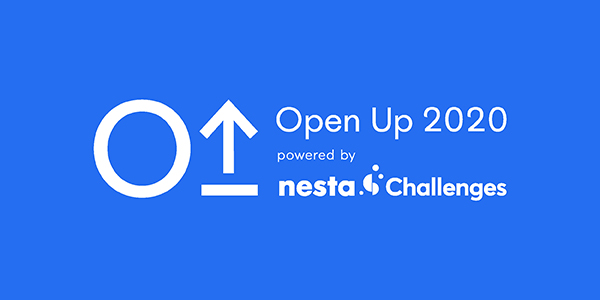
The cloud has revolutionized business agility and innovation, but it has also brought a new era of financial complexity. Unmanaged cloud costs can quickly spiral out of control, impacting growth and sustainability efforts. Enter FinOps—a cultural shift, a collaborative practice, and a data-driven discipline that empowers organizations to master their cloud finances. This blog post, inspired by London Tech Week’s focus on future-proofing businesses, explores FinOps as a strategic imperative for achieving sustainable cloud growth.
What Exactly Is FinOps?
Financial Operations, or FinOps, is essentially a set of cultural and operational practices that guarantee a company gets the most out of every cloud investment.
The catch, though, is that it is not all about saving money. It all comes down to being more frugal.
FinOps, according to the FinOps Foundation, is all about making sure that the cloud ecosystem can see how much money is coming in and going out quickly. Think of it as DevOps with cloud cost control instead.
Why Enterprises Are Doubling Down Right Now
Let us break down the reasons why FinOps is now mandatory:
1. Matters of Cloud Billing Are Now Raised in Boardrooms
Chief Financial Officers are requesting detailed information about all cloud expenses, broken
down by team, project, and API call. Saying that cloud computing expenses are “IT overhead” is so last century. Major Technology Case: Recently, efforts were launched by Meta and Google Cloud to connect cloud usage to unit economics, which can be defined as cost per user, per feature, or per transaction.
2. Engineering Groups Desire More Accurate Information
Even if developers have no interest in accounting, they would like to know if their code is generating ₹10,00,000 per month. Cost data may now be integrated into integrated development environments (IDEs), continuous integration and delivery pipelines (CI/CD), and Slack notifications with tools such as CloudHealth, Finout, Spot by NetApp, and others.
3. AI and GenAI Tasks Are Very Pricey
It is not cheap to get an LLM and apply. In the millions of dollars, companies are witnessing price surges when they experiment with GenAI on AWS, Azure, or GCP. Innovation becomes a budget disaster in the absence of FinOps safeguards.
4. Objectives linked to environmental, social, and governance (ESG)
FinOps transcends monetary concerns. Reducing overprovisioned instances helps organizations save money and meet sustainability goals, which is why more and more companies are tying cloud efficiency with carbon efficiency.
Key Pillars of a Modern FinOps Practice
Want to implement FinOps right? Here’s your blueprint:
Pillar | What It Means | Example |
Visibility | Know who is spending what, where, and why | Real-time cost dashboards by project, team, or cloud service |
Optimization | Reduce waste and right-size resources | Auto-scaling groups, reserved instances, spot usage |
Accountability | Assign ownership to teams that create spend | Cost showback or chargeback by department |
Automation | Automate governance policies and alerts | Auto-stop idle resources, anomaly detection with ML |
Collaboration | Finance + Engineering + Ops work as one | Regular FinOps reviews and cloud cost stand-ups |
Financial Operations Revolutionary Tools
A look at the FinOps technology stack that businesses are using:
- VMware’s CloudHealth – Cost optimization and governance for enterprises
- AWS Budgets and Cost Explorer—In-House AWS Tools for Tracking and
- Notifications
- Financial Outcomes—Kubernetes and SaaS Cost Observability via Business Mapping
- Apptio Cloudability – State-of-the-art reporting, prediction, and economic analysis
- Kubecost – Tracking costs native to Kubernetes
- Tap into Streamlined Financial Operations for Developers Integrated into Cloud Cost Management Pipelines
FinOps in Action: A Real-World Example
In just six months after rolling out FinOps to every department, a worldwide retail behemoth
cut its cloud expenditure by 27 per cent. Just how?
- They determine the budget caps for the development and testing environments.
- Utilized automation to move 40% of workloads to spot instances.
- Continually included cost data in Scrum sessions.
- Developed cost dashboards that engineering teams may use on their own.
What is the outcome? There will be no slowdown in invention or speed, simply better utilization.
The Future: FinOps Gets Smarter, Deeper, and More Automated
Prone to significant shifts in the next twelve to eighteen months:
- Your cloud bill will automatically notify you of any discrepancies thanks to AI-powered anomaly detection.
- YAML or Terraform-defined FinOps policies are part of the Cost-as-Code framework.
- Cloud Spend ChatOps: “Hey Slack, could you tell me who spent the most money last week?”
- Integrating FinOps with ESG dashboards to provide carbon and cost information is a GreenOps feature.
Optimal aspect? Integrating FinOps into your continuous integration and continuous delivery
pipeline, infrastructure code, and cloud console will make it invisible.
Final Word
Using the cloud is like trying to operate a race car without a dashboard; it is powerful, but FinOps is essential. Organizations can benefit from FinOps in more ways than one if they adopt it now. A culture of responsibility, openness, and smart use of resources is being established, one that will bring engineering, finance, and company strategy into harmony. Perhaps the most important result is a world where saving time and energy gives businesses an edge.
FinOps is not a mere trend, but a transformative force that empowers businesses to harness the cloud’s full potential while navigating its financial complexities. By embracing FinOps as a strategic imperative, organizations can unlock cost savings, drive efficiency, and foster a more sustainable future. Want to learn more about how VE3 can help you achieve your FinOps goals? Visit our FinOps services page. Visit our FinOps services page. Contact Us or visit our website for more details.









